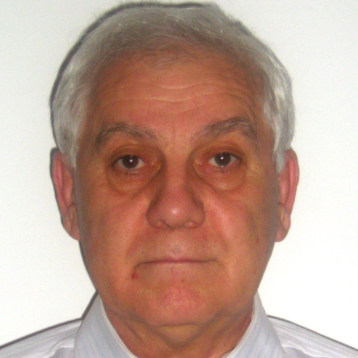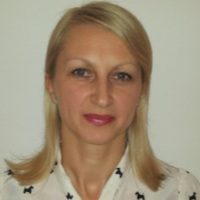International Journal of Information Technology and Computer Science (IJITCS)
IJITCS Vol. 11, No. 9, 8 Sep. 2019
Cover page and Table of Contents: PDF (size: 1009KB)
Application of Cauchy (Lipschitz) Criterion for Obtaining Theoretical Models of Atmosphere Striking Overvoltages
Full Text (PDF, 1009KB), PP.20-30
Views: 0 Downloads: 0
Author(s)
Index Terms
Atmospheric voltage, Cauchy (Lipschitz) criterion, RC generator, Simulation, Theoretical model
Abstract
In investigation of consequences of atmosphere and commutating striking voltages, for simulation of the overvoltage are used the models of generators whose RC circuits have standard passive parameters of the elements upon which the form of striking overvoltage depends.
According to IEC 62 305-1 standard, these formulas in the theoretical model serve for dimensioning the RC circuit of the generator of striking voltages although the definitions of time constants and passive parameters have only axiomatic character. Related to classical solution, this paper presents the model formed by mathematical procedure the solutions of which give sufficiently accurate values of time constants and essential parameters of RC circuit as well as the shape of striking voltage wave. The formulas for voltages and currents in model contain parameters of passive elements, and their accuracy has been confirmed by diagrams obtained in simulation by means of adapted psbtrnsrg.mdl part of MATLAB program. Theoretical model is suitable for simulation of standard wave forms of striking atmospheric and commutating overvoltages which replace laboratory testing.
Cite This Paper
Slobodan N. Bjelić, Nenad A. Marković, Zorica S. Bogićević, Igor S. Bjelić, "Application of Cauchy (Lipschitz) Criterion for Obtaining Theoretical Models of Atmosphere Striking Overvoltages", International Journal of Information Technology and Computer Science(IJITCS), Vol.11, No.9, pp.20-30, 2019. DOI:10.5815/ijitcs.2019.09.03
Reference
[1]N. Marković, S. Bjelić, J. Živanić, V. Milićević, Z. Milićević, “Model of Transient Process Where Three-Phase Transducer Feeds Induction Motor Equivalented as a Variable Active-Inductive Load”, Mathematical Problems in Engineering, Vol. 2016, Article ID 6740261, Research Article, 2016, http://dx.doi.org/10.1155/2016/6740261.
[2]P. Vukelja, J. Mrvić, D. Hrvić, “The Experimental Investigation of Overvoltages Transferred From High to Low Voltage Side of 420 kV/15.75 kV/15.75 kV Transformer Made by Asea and Located in Hydroelectric Power Plant Djerdap 1”, UDK: 621.3.015: 621.314.222.6, Vol. 18, 2007, pp. 161-173.
[3]И.Н. Бронштеин, К.А. Семендьев, “Справочник по математике”, Moskva, Nauka, 1975, pp. 154.
[4]S. Bjelić, P. Spalević, Z. Bogićević, B. Prlinčević, “Generating Control Signals in the Electro-energy Networks Using Passive Elements”, Journal of Multidisciplinary Engineering Science and Technology (JMEST), Vol. 1, Issue 4, 2014, pp. 248–253.
[5]C.T.R. Wilson, “Investigations on lighting discharges and on the electric field of thunderstorm”, Philosophical Transactions of The Royal Society, pp. 73–115.
[6]I.G.C. Simpson, “Proceeding Royal Society (GB)”, No. 114, pp.114.
[7]N. Marković, S. Bjelić, Protection against hazardous electrical current, Higher Technical School of Professional Studies Urosevac in Leposavic, 2018.
[8]Standards: IEC 60071-1, IEC 61024-1: Protection against lightning.Part 1: General principles IEC 62305-1.
[9]L. Van der Sluis, “Transients in Power Systems”, John Wiley & Sons Ltd, 2001.
[10]B. Jovanović, S. Bjelić, N. Marković, “Transient Processes on the Elements of Underground Installations”, International Journal of Information Technology and Computer Science IJITCS 2017, Vol. 9, No. 9, pp. 1–10, DOI: 10.5815/ijitcs.
[11]L.L. Grigsby, “The Electric Power Engineering Hand book”, Chapter 10 Power System Transients, 10.6 Transient Voltage Response of Coils and Windings, CRC Press LLC, 2001.
[12]N. Marković, S. Bjelić, J. Živanić, U. Jakšić, “Numerical simulation and analytical model of electrical arc impedance in the transient processes”, Elektronika, Energetika, Elektrotechnika, Przegląd Elektrotechniczny, 2013-2a2013, pp. 113–117.
[13]S. Bjelić, Z. Bogićević, “Computer Simulation of Theoretical Model of Electromagnetic Transient Processes in Power Transformers”, Information Technology and Computer Science, IJITCS 2013, Vol. 6, No. 1, pp. 1–12, DOI: 10.5815/ijitcs.2014.01.01.
[14]N. Mohan, T.M. Undeland, W.P. Robbins, “Power Electronics: Converters, Applications, and Design”, John Wiley & Sons. Inc., Section 8.4.1., NewYork, 1995.
[15]A. Veverka, “Technika Vysokých Napeti” SNTL/ALFA, Praha 1982, pp. 283–292.
[16]V. Milićević, S. Bjelić, N. Marković, U. Jakšić, “Simulation of transient process in distributive networks middle voltage (10-35 kV)”, BizInfo, UDK: 621.316.027.6:519.876.5, Vol. 1, 2014, pp. 83-93,
[17]J.C. Meyer, D.J. Needham, “The Cauchy Problem for Non-Lipschitz Semi Linear Parabolic Differential Equatials”, London Mathematical Society, Cambridge, 2000.
[18]M. Pierre, R. Shigui, “Theory and Applications of Abstract Semilinear Cauchy Problems”, Springer, Switzerland, 2018.
[19]MATLAB SIMULINK Sim Power System, Copyright 1984-2002 The Math Works, Version 6.5.0,180913a, June 2, 2000.



